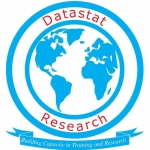|
|
Training Course on GIS and Remote Sensing in Disaster Risk Management & Climate change
USD 1,000 |
Venue: Nairobi and Mombasa, Kenya
Training on Geographic Information Systems (GIS) and Remote Sensing in Disaster Risk Management & Climate change is an important course that will help in the management of disaster. Most of the disasters and hazardous events are as a result of extreme climatic conditions and increased urban population growth. These disasters cause a lot of suffering among the societies which affects the shelter, food, and causes various disease infections. It is for these reasons that training on disaster management is important. Disaster management information equips people with skills that will help in times of disaster events. Training on Geographic Information Systems (GIS) and Remote Sensing in Disaster Risk Management & Climate change is job oriented and thus the trainee will have a chance to secure employment in disaster risk management in the ministry of environment.
Duration
5 days
Targeted Audience
The course will be meant for those professionals who are in need to either further or acquire skills on the application of GIS and RS in their organization in the field of disaster management. The trainees from variety of organization are invited for training e.g. Institutions of physical planning, professionals and private GIS and RS related firms.
Learning objectives
And the end of training the participants will be able to:
- Describe and utilize spatial data, GIS and remote sensing in disaster in management.
- Apply GIS/remote sensing in hazard, vulnerability and risk assessment.
Course Content
Module I
Basic information
- Basic GIS and RS concepts and terminologies in the context of disaster management.
- International and Regional Guidance: Protocols and action plans
- Introduction to spatial information
- Exercise I: Handling spatial information I:(Using Quantum GIS Software).
GIS data sources, data collection and integration techniques for DRM
- Data sources for DRM.
- Satellite image data sources for DRM.
- Task I: GPS /mobile phone GPS for HV field GIS data collection using ODK.
- Activity: GPS/mobile Course Tour.
- Exercise II: Handling spatial information II: GPS, GIS Integration using QGIS.
- Group discussions: How can GIS and RS be used for identification of geographic areas affected by each natural hazard.
Module II
Hazard, vulnerability and Risk assessment with GIS and RS (Pre-Disaster)
- Types and methods of risk assessment, risk evaluation, cost-benefit analysis.
- Task II: Gentle Refresher of Microsoft Excel.
- Task III: Spatial data preparation and GIS integration techniques in Microsoft Excel
- Use of GIS in disaster preparedness planning.
- Task IV: Elements at risk, hazard and vulnerability assessment using GIS.
- Task V: GIS Multi criteria analysis in vulnerability assessment.
- Group discussion: How can GIS and RS be used to map existing buildings, infrastructure, land use and critical facilities located in potential hazard areas.
Module III
Application of Risk Information for Risk Reduction Planning (Pre-Disaster)
- Task VI: Visualization of risk information (Using QGIS/ILWIS/SAGA Software).
- Task VII: Risk mapping and database generation using Excel/QGIS and SAGA
- Task VIII: Disaster monitoring: satellite image processing techniques for change detection
- Exercise III: Creating a personal geodatabase for GIS emergency support manpower with personnel location information, contact information, and specialized skills.
- Exercise IV: Creating a risk map.
- Group discussion: Use of GIS and RS in identification of the extent and magnitude of each hazard.
Module IV
Introduction to Early warning systems and Information Networks (Pre-Disaster)
- Early warning systems and Information Networks for major hazards.
- Group discussion: How can GIS and RS be used in a Drought Early Warning System
Disaster Impact Analysis (Post Disaster)
- The use of satellite imagery for disaster relief and recovery.
- Activity: Visit to a satellite data receiving and processing station depending on location of training and availability of time.
- Group discussion: How can satellite images and aerial photos be used to locate refugee and internally displaced persons?
Module V
Public Participatory GIS and Disaster Risk Management (Pre and Post Disaster)
- Participatory GIS as a tool for DRM mapping.
- Task IX: Using Google Maps and Google Earth in DRM.
- Exercise VI: SMS to Map for community crisis mapping - Using Ushahidi.
- Group discussion: What GIS and RS tools are suitable for mapping of urban (social) hazards such as crime zones, drug corners, and accident black spots
Methodology
The instructor led trainings are delivered using a blended learning approach and comprises of presentations, guided sessions of practical exercise, web-based tutorials and group work. Our facilitators are seasoned industry experts with years of experience, working as professional and trainers in these fields.
| Nairobi and Mombasa, Kenya | Jul 01 - 05 Jul, 2024 |
| USD 1,000.00 | |
Sammy Gathuru 0724527104
Related Courses
 Training Course on Grant Management using Infor Sun Accounting System
Training Course on Grant Management using Infor Sun Accounting System
12 days, 06 - 17 Jan, 2025
Datastat Research Center
 Training Course on Data Visualization using Tableau
Training Course on Data Visualization using Tableau
5 days, 06 - 10 Jan, 2025
Datastat Research Center
 Training Course on International Protocol and Diplomacy
Training Course on International Protocol and Diplomacy
5 days, 06 - 10 Jan, 2025
Datastat Research Center
 Training Course on Monitoring and Evaluation for Governance (Decentralization and Local Governance)
Training Course on Monitoring and Evaluation for Governance (Decentralization and Local Governance)
5 days, 06 - 10 Jan, 2025
Datastat Research Center



